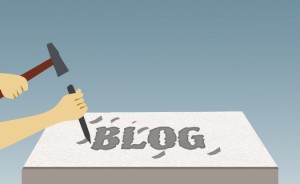A Guide to Best Practices for Creating WordPress Posts
Posted on May 10 2014 by in Blog
Even though WordPress has made the creation of new posts a simple process there are certain things to keep in mind that are easy to overlook. It is easy to simply create a handful of posts and hope for the best, whether you are creating a personal blog or operating a business blog. There are many common mistakes that are easy to avoid if you take the time to understand these best practices. When visitors notice these mistakes it can be off putting and lead to lower conversion rates. Before you fill your WordPress website with dozens of posts containing errors, take a look at this guide to best practices for creating WordPress posts.
Stick to Your Initial Message
If there is one rule to remember it is that you should always stick to your initial message. It is fairly easy to get off track when you are writing a post on a topic that you are care about or have a lot of knowledge with. When you get off topic, you will lose readers, as they may find it difficult to follow your train of thought. Always stick to the message that you are trying to get across. Whether you are providing a helpful guide or simply providing your opinion on a subject, stick to your subject.
Using Paragraphs and Headings
WordPress has provided the ability to easily separate your content into paragraphs and to add headings. When using the visual editor in WordPress, WordPress will automatically add the appropriate HTML tags to your paragraphs. Simply enter a new line at the end of a paragraph. Break your content up into paragraphs to make your content easier to read. No one is going to want to read one long paragraph. Next, be sure to use headings when dividing up your content. The title of your post, unless it is automatically inserted at the top of each post by your theme, should use an h1 tag for the header. From there, move on to the next level down, as you create your heading to separate subjects within a post. The use of paragraphs and headings are a simple way to make your content more readable.
Proper Grammar and Spelling
WordPress includes a basic spell checker that will detect most spelling errors and some grammatical errors. For additional help, there are WordPress plugins that provide grammar and spelling checks. Use these plugins to check your grammar and spelling before you publish your WordPress post. Another option is to use your favorite text editor, such as Microsoft Word, and take advantage of the spell checker and grammar correction provided. As a side note, when you are writing a professional posting, avoid using slang whenever possible.
These simple steps will help ensure a well written WordPress post; though, it does not stop there. Be sure to keep on writing as practice will help. Including pictures in your WordPress post is another way to help break up your content and provide an easier reading experience. One final note is that unless you understand HTML stick with the visual editor when typing your posts in WordPress. In the end, creating a WordPress post should be about providing helpful information and getting your point across clearly.



